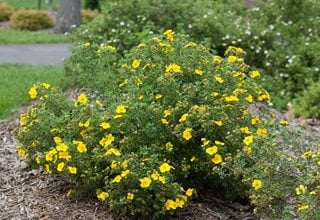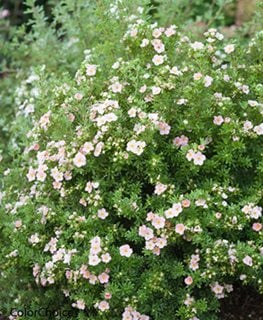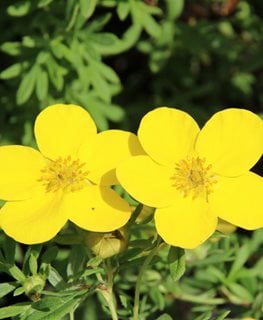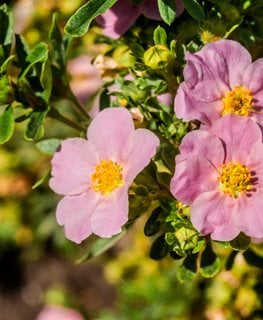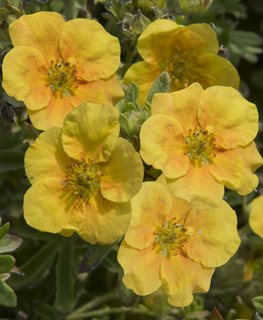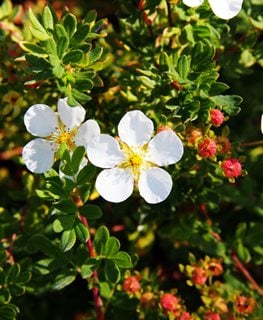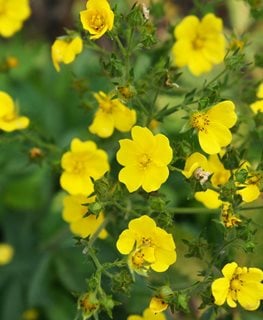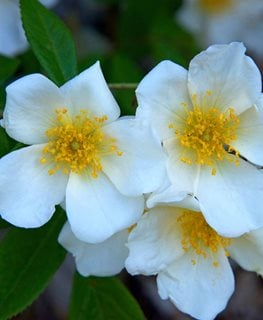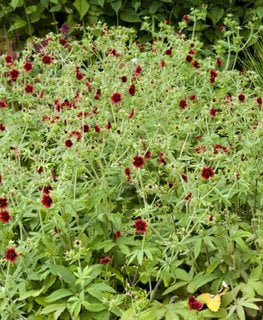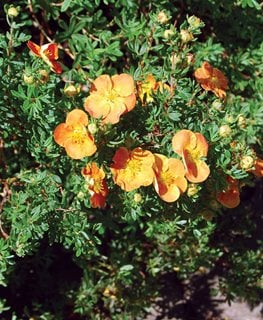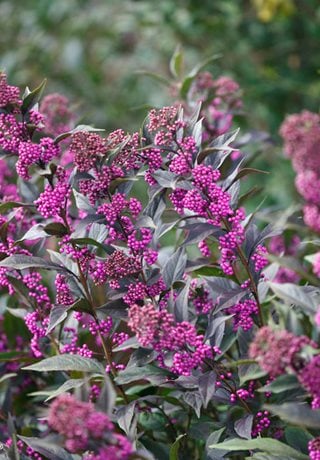Guide to Growing Pretty Potentilla Shrubs
Add structure and color to the landscape with long-blooming cinquefoilPotentilla, also called shrubby cinquefoil or bush cinquefoil, is one of the most popular landscape shrubs. It is valued for its long bloom time, exceptional hardiness, and carefree nature. Tolerant of a wide range of growing conditions, this sturdy plant stands up to drought, air pollution, and salt air, making it ideal for urban environments and beachfront locations. Despite its toughness and reliability, potentilla isn’t suited to southern regions with hot, humid summers.
A versatile addition to any landscape, potentilla shrubs can be used as hedging, massed along a slope, as a specimen in a mixed border or rock garden, and in containers. It’s also a good choice for firescaping and erosion control. The flowers are an important food source for butterflies and pollinating insects.
On this page: The Basics | Planting Potentilla | Care Tips | How to Choose the Right Potentilla | Potentilla Varieties | Landscaping Tips
- THE BASICS
- PLANTING POTENTILLA
- CARE TIPS
- HOW TO CHOOSE THE RIGHT POTENTILLA
- POTENTILLA VARIETIES
- LANDSCAPING TIPS
THE BASICS
Zones:
2-8
Height/Spread:
Varieties from 3 inches to 4 feet tall, and 6 inches to 5 feet wide.
Exposure:
Full sun to partial shade. Plants will flower best with at least 6 hours of full sun. Some afternoon shade in warmer climates will help keep plants blooming longer and the flowers from fading.
Bloom time:
Spring to fall
Color and characteristics:
The saucer-shaped blooms come in shades of white, yellow, pink, orange or red. Flowers are usually single, but can also be semi-double or double. Foliage is finely textured, bright to dark green, with palmate leaves ¾ of an inch to 4 inches long that have 3 to 15 fingerlike leaflets. Fruit is inedible and somewhat dry—resembling strawberries—hence nickname “barren strawberry.” Fall color is insignificant on most varieties.
Toxicity:
Potentilla is an herb whose flowers and leaves are used as natural remedies for stomach upsets or inflammation. It is not known to be harmful to children or pets.
Background:
A member of the rose family, potentilla is native throughout the Northern Hemisphere, found growing in mountain or meadow habitats. There are 500 species, including shrubs and perennials, with a small percentage being annual or biennial. Shrubby cinquefoil (Potentilla fruticosa) is a small-to-medium-sized deciduous shrub most often used by landscapers and home gardeners, though perennial and groundcover types are also available. The common name cinquefoil, meaning “five leaves,” refers to the five leaflets found on many varieties.
PLANTING POTENTILLA
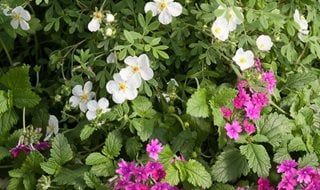
Combine Happy Face® White potentilla with Superbena® Pink Shades for bright summer color. Photo by Proven Winners.
When to plant:
Potentilla is best planted during cooler months in spring or fall. Spring is optimal so that roots have a full growing season to become established.
Where to plant:
In a sunny site with fertile, well-draining soil that will stay evenly moist.
How to plant:
Cover the planting area with 2 inches of compost and mix into the soil 6 to 8 inches deep. Dig a hole 1-1/2 times larger than the root ball and remove the plant from the container. Gently tease out the roots if potbound and place in the hole so the top of the root ball is just slightly higher than the soil surface. Gently tamp down soil around the base and water well. Space 3 to 6 feet apart, depending on mature size. Note: Adding compost, planting high, and watching the amount of water is especially important in clay soils.
CARE TIPS
Pruning and deadheading:
Begin pruning shrubs to retain structure in the third year after planting. Potentilla can suffer some winter dieback in colder regions. In late winter or early spring before new growth emerges, cut out any dead or diseased wood. Lightly prune the entire plant to shape as needed. To rejuvenate older specimens, cut plants back by a third every few years. Flowers are self-cleaning and need no deadheading.
Soil:
Potentilla does best in moderately fertile soil, and is tolerant of clay, alkaline, rocky, dry, or poor soils as long as there is good drainage. Soil pH should range between 5 and 7. Yellow leaves or stunted growth can be symptoms of iron deficiency.
Amendments & fertilizer:
Potentilla needs little fertilizer and few amendments once established. In spring, place a 2-inch layer of compost around the base or apply an all-purpose fertilizer according to package instructions. Mulch with organic material such as leaves or wood chips to suppress weeds and conserve moisture.
Watering:
Keep plants evenly moist during the first growing season to encourage deep, healthy roots. Water once or twice a week during extreme heat; plants are drought tolerant once established. Water with a soaker hose or drip irrigation rather than overhead to help prevent fungal problems.
Diseases and pests:
When planted in ideal conditions, potentilla is resistant to most pests and diseases. Too much shade, lack of air circulation, or high humidity can cause fungal diseases such as downy mildew, powdery mildew, rust, or leaf spot. Poor drainage or overwatering can result in root rot. Possible insect problems include spider mites or aphids.
Deer resistance:
Deer will leave potentilla alone, though extreme conditions can result in deer grazing on plants they wouldn’t otherwise.
HOW TO CHOOSE THE RIGHT POTENTILLA
With different forms and sizes to choose from, here are some tips to consider:
For beds, borders and rock gardens:
Larger varieties can be planted midway in a mixed border in combination with other shrubs, trees, and perennials. Smaller forms can be sited towards the front of a bed or border. Choose alpine types for rock gardens.
For hedging:
Smaller varieties are suitable for edging pathways, while larger types can be used as hedging to define garden rooms or property lines.
For slopes:
Mass any type that’s suitable to the scale of your landscape along a slope for low-maintenance erosion control.
For containers:
Plant smaller varieties in containers by themselves, or in combination with other low-maintenance plants with similar needs.
POTENTILLA VARIETIES
LANDSCAPING TIPS
There are many ways to incorporate potentilla into your landscape. Here’s how:
- Place the same variety in different parts of the yard to unify the space.
- Edge pathways and borders with a low hedge or mass planting for months of extended color.
- Plant a slope with a single variety, or alternate different colors, grouping at least 3-5 plants of the same color for maximum impact.
- For a seaside retreat, mix with other salt-tolerant plants for quaint cottage-style appeal.
- Plant a hedge along a sidewalk where plants need to stand up to heavy pedestrian traffic and other urban challenges.
- Use a single specimen in a container for a stand-alone accent at the end of a pathway or near an entryway.
- Mass by themselves or in combination with other tough groundcovers along a slope to control erosion and stabilize the hillside.
RELATED:
Best Flowering Shrubs for Season-long Color
Guide to Growing Shrubs
More Flowering Shrubs

